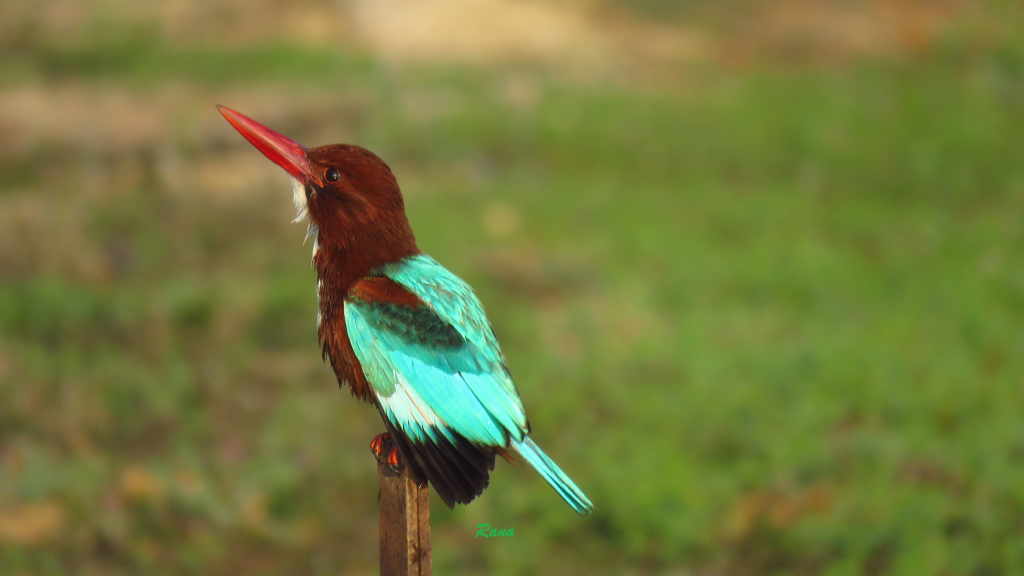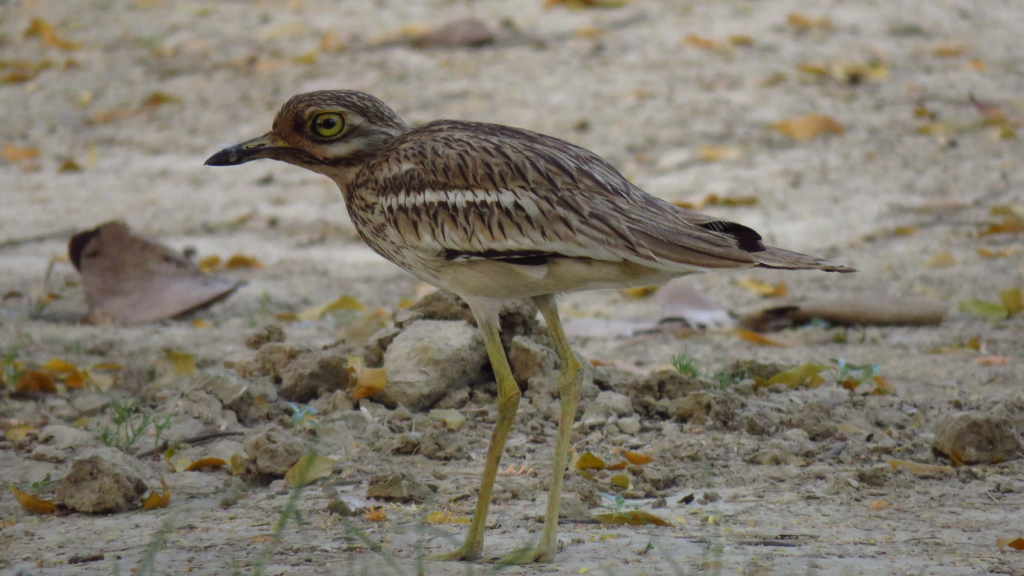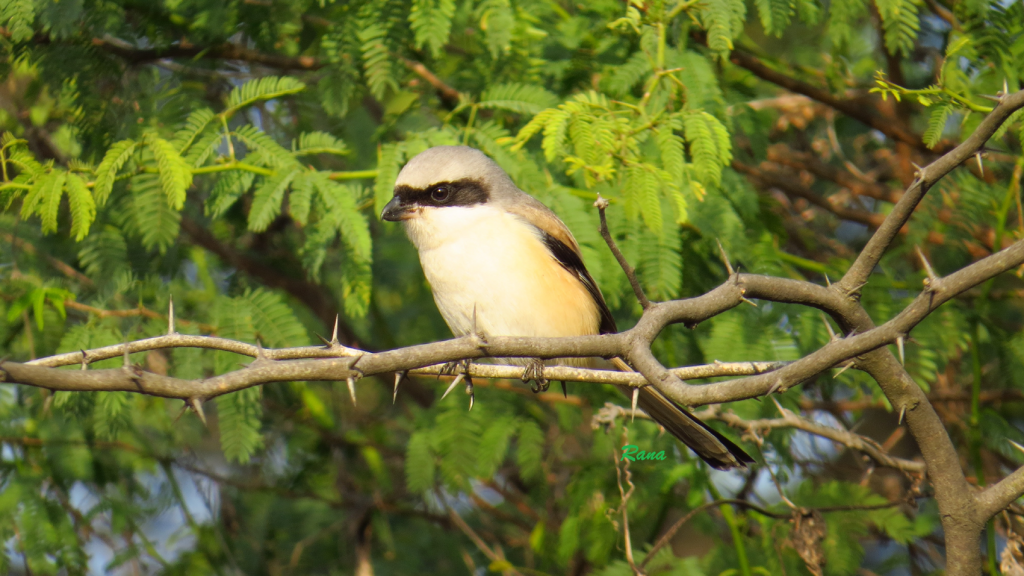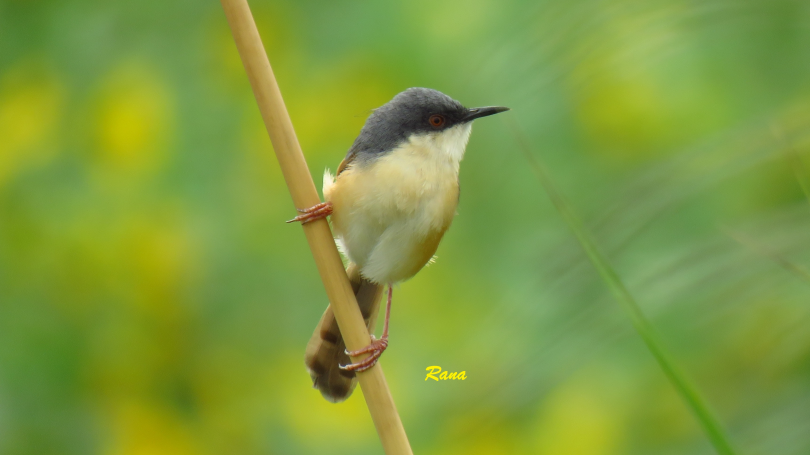
Kingfisher (White Breasted) {Manch Ranga}
1. Indian Names: –
(a) Hindi: Safed-chati Kilkila, Kourilla
(b) Bangla: Sandabuk Machhranga
(c) Marathi: Khandya, Pandharya Chaticha Dhivar
2. The White Throated Kingfisher is a tree kingfisher & is widely distributed over the Indian subcontinent. In Meerut, they can be seen near nullas, parks & gardens perched attentively still on branches & wires. They have a bright blue back, wing & tail, whereas their head, shoulders & lower belly are chestnut in colour. Their throats & breasts are white in colour. It has a large red bill & short red coloured legs. This bird is the state bird of West Bengal & feeds on small fishes, insects, rodents, reptiles & at times small birds.
3. Conservation Status: Least concern.

Curlew (Indian Stone)
1. Indian Names: –
(a) Hindi: Bada Karwanak
(b) Bangla: Shilabatan, Bodo Motahatu
(c) Marathi: Bhartiya Karvanak
2. This ground bird is also called the ‘Indian Thick Knee’ & is found in Southern & Eastern Asia. They inhabit open grasslands, forests & riverbeds. In Meerut, they can be spotted in & around Sofipur & Dabathua. The bird is stocky, has large piercing yellow eyes & a large head. It has strong legs with thick knees & its body is sand brown in colour with dark stripes. These birds are most active at night & are generally seen standing still under bushes with a stunned look during the day. Their diet includes seeds, insects, worms & small reptiles.
3. Conservation Status: Least concern.

Shrike (Long Tailed) Koshai pakhi
Indian Names: –
(a) Hindi: Kajla Latora
(b) Bangla: Khaeryi karkata
(c) Marathi: Naklya khatik, Khatik
2. The Long-Tailed Shrikes are resident to much of Asia & are frequently seen in open grasslands & agricultural fields. They weigh around 50 grams & have a long narrow black tail, a black mask, a black short curved beak & rufous coloured rumps & flanks. They generally mark their territories and can be seen sitting alone on a bush, low branch or wire looking attentively for its prey which consists of insects, lizards, rodents or small birds.
3. Conservation Status: Least concern.

GREY FRANCOLIN (Francolinus pondicerianus)
Indian Names: –
(a) Hindi: Raam Teetar, Safed Teetar, Gora Teetar
(b) Bangla: Khyr
(c) Marathi: Chittur, Rakhi Tittar
2. This bird is also called the ‘Grey Partridge’ & are found in the plains of the Indian subcontinent. They weigh about 250 – 350 gms & are barred throughout their body. Its face is pale & has a thin black border with the neck. They have strong legs & are very fleet-footed. They seldom take to flight without provocation. The Grey Francolin is generally seen in groups of two to four birds foraging on the ground for seeds, grains & insects.
3. Conservation Status: Least concern.

MOOR HEN (Gallinula chloropus)
Indian Names: –
(a) Hindi : Jal murghi, Murghaabi
(b) Bangla : Jal murghi, Dakab paira
(c) Marathi : Pan kombdi, Kali pankombdi
2. Often referred to as the ‘Water Hen’ or the ‘Swamp Chicken’, these birds are medium-sized birds & common to Africa, Europe & Asia. In Meerut, they can be seen in environmental parks & freshwater bodies. They have black plumage, yellow legs, a characteristic red frontal shield & a red beak with a yellow tip. These birds build their nests in thick vegetation near freshwater bodies in the months of March, April & May. They generally feed on water weeds & aquatic creatures, but can also be seen looking for insects, grains & seeds next to water bodies.
3. Conservation Status: Least concern.

RED NAPED IBIS (Pseudilus papillosa)
Indian Names: –
(a) Hindi: Karankul, Kala Banjh
(b) Bangla: Kalo dochara
(c) Marathi: Kala sherati
2. This bird is also called the ‘Indian Black Ibis’ & can be found commonly in the plains of the Indian subcontinent. In Meerut, they can be seen in environmental parks & in the outskirts of the city. This bird has a black body with a long downward curved black beak & sturdy legs. They have a bare head with a red coloured wart, a white patch on their shoulder & black wings with a green gloss. They are strong fliers & fly with their necks outstretched. Generally seen in small flocks, they are carnivorous in their eating habits.
3. Conservation Status: Least concern.

WOOLY NECKED STORK (Ciconia episcopus)
Indian Names: –
(a) Hindi : Haji Lak Lak
(b) Bangla : Manik jor
(c) Marathi : Pandhrya manecha karkocha
2. The woolly necked stork is a medium-sized stork & is widespread in South & South-East Asia. It is generally a resident in its range. The stork has a black skull cap, a woolly/ downy white neck, with the rest of the body being shiny black or wine red. They have a deep red iris. These birds are found near shallow water bodies, farmlands & irrigation canals. They feed on insects & small fishes. You may see this bird on the outskirts of Meerut Cantt, Sofipur or Dabathua.
3. Conservation Status: Vulnerable, though the population in India is stable.








Leave a Comment